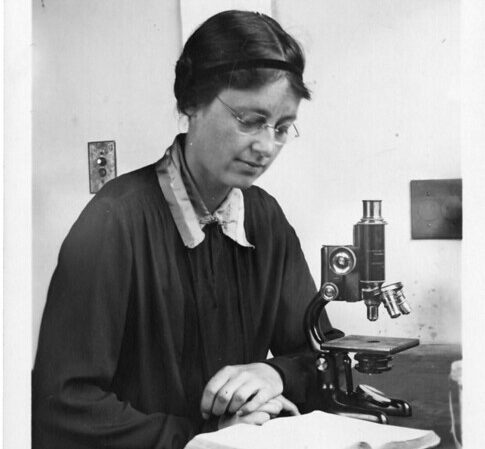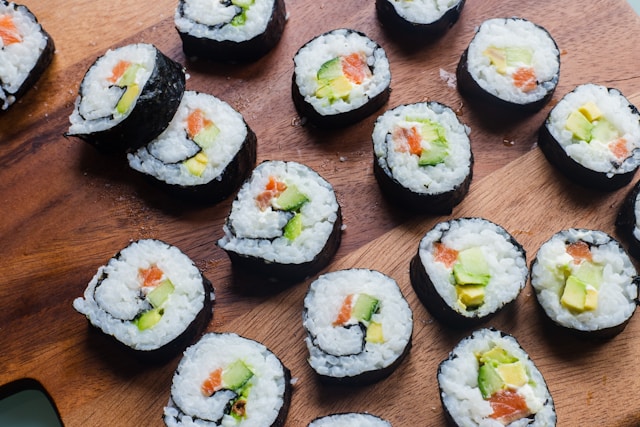Blog: How a University of Manchester Researcher from Leigh saved Sushi
Japan is famous for its sushi – one of the nation’s most popular dishes and a culinary art form that has spread worldwide. However, did you know that without the work of a University of Manchester researcher from Leigh in Wigan, the Sushi industry could have died out decades ago?
As part of our series exploring the historic links between Greater Manchester and Japan, we wanted to share the incredible story of Kathleen Drew-Baker and how she changed the face of international food production forever.
INTRODUCING KATHLEEN-DREW-BAKER
Kathleen Drew-Baker was a lecturer in botany and a researcher at the University of Manchester from 1922 until she died in 1957. Sadly, she passed away unaware of the huge contribution her work would make.

Born in the Greater Manchester town of Leigh in November 1901, Drew-Baker earned a County Major Scholarship to study botany at the University of Manchester. She graduated with a first-class honours degree in 1922, going on to gain her MSc as well as work as a lecturer in the university’s cryptogamic botany department.
So devoted to her research, she stayed with the University of Manchester for the rest of her life, even taking an unpaid research fellow position following her marriage. At the time, the University, alongside other UK academic institutions, did not employ married women. She did not let these societal rules stop her, and carried out her research at home and unpaid because of her passion.
Despite being published in 47 academic papers throughout her career and co-founding the British Phycological Society, it was Drew-Baker’s research into coastal samples in Wales that made her an internationally renowned name and saved one of Japan’s most famous dishes.
THE TROUBLE WITH ‘LUCKY GRASS’
To make sushi, chefs need a special kind of seaweed called nori. It has a strong and distinct flavour that makes Sushi so delicious and is needed for wrapping the rolls and holding the sushi together.
Growing and harvesting this type of seaweed is notoriously difficult and unpredictable, as it can be easily damaged by typhoons or pollution. So much so that in Japan it became known as ‘lucky’ or ‘gamblers’ grass.
After the Second World War the Japanese nori industry went into decline, as it was too unreliable to produce and the country needed to prioritise rebuilding. By 1951, nori production had all but ceased due to damage from typhoons and pollution along the Japanese coast, reducing the number of seeds and seedlings.
This is where Drew-Baker comes in. Her research into a leafy red seaweed, commonly known as laver in the UK, was published in the international journal Nature in 1949. During a trip to the Welsh coast, she discovered that a sludgy microscopic algae grown in seashells during the summer was the same species as the seaweed that appeared in their place in winter, rather than an independent alga. The seashells provided a host environment that allowed this red algae to develop..
The importance of her research was recognised by a Japanese botanist who understood that it could be replicated to allow for the wider, year-round cultivation of edible seaweed in Japan.
Her discovery, picked up by chance 6000 miles away from her lab in Manchester, enabled nori farmers in Japan to turn this nutrient rich food stuff from a gambler’s harvest to a reliable large scale crop.
Segawa Sokichi of the Shimoda Marine Biological Station was able to apply what he read about in Wales to what he worked with in Japan. Using Drew-Baker’s findings, he put in place the industrial processes that would lead to the plentiful and more predictable harvest of nori. Meaning that ‘lucky’ grass would no longer rely purely on luck.

THE MOTHER OF THE SEA
Kathleen Drew-Baker’s research had such an extraordinary impact in Japan that she became known as the Mother of the Sea. Sadly, Drew-Baker passed away without ever knowing the true impact of her work, but the people of Japan are determined to keep her legacy alive.
In the city of Uto, Kumamoto, a memorial was erected in Drew-Baker’s honour in 1963.
To this day, Japanese nori farmers have an annual festival on 14 April they call Drew Day, which they celebrate at the memorial and decorate the monument in flower garlands overlooking the Ariake Sea.
Drew-Baker’s two children, John and Francis, later travelled to Japan years after their mother’s passing to experience first-hand the admiration of her mother. It’s said that the siblings were mobbed by TV cameras and photographers, and treated like celebrities.
For many of us, Sushi is one of the first things that comes to mind when we think of Japan. However, without the work of a Manchester researcher, a multi-billion-pound food industry might never have survived.
Greater Manchester is now home to leading food manufacturing businesses including Japanese brand Mizkan with a production site in Middleton, Rochdale. It’s remarkable to think that our region played such a game-changing role in one of the world’s most famous dishes. It’s an honour to know that the much celebrated Mother of the Sea is a Mancunian.
Two of the microscopes that Kathleen used in her research can be found in the Science and Industry Museum’s online collection, with a 1920’s model and a 1950 model.
Learn more about the fascinating connections between Greater Manchester and Japan through our series of blogs, and keep up to date on current events by following the Greater Manchester Japan Steering Group on LinkedIn.
